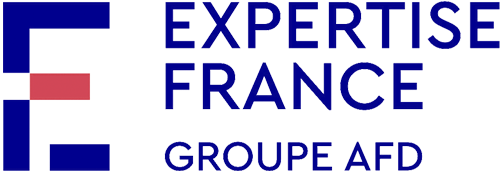Monitoring the Sustainable Development Goals: the challenges for official statistics
With the United Nations General Assembly decision of September 2015, progress towards the 17 Sustainable Development Goals (SDGs) and their specific targets are followed through the measurement of 232 statistical indicators set for 2030. The 169 targets represent the aim of the action, the results we want to achieve through this global exercise; and the indicators are the ways to measure the progress to these targets.
The production of official statistics under scrutiny
The 2030 Agenda is the most crucial and challenging issue ever for the statistical community all over the world. This is particularly true for the production of official statistics as it is each country’s solemn responsibility to produce quality data and report on them to the United Nations. This brings a global interest to official statistics and to the numbers that are measuring our lives and our well-being.
These data are considered as public good as they serve the citizens giving them a view on our society and on the impact of public policies governments are implementing. Also they inform politicians and policy makers about the state of the society. Simply statistics produced by a statistical system serve as evidence on the actual state of our word. The quality and exactitude of provided information is thus essential.
The 232 indicators are nothing else than information provided by what we call a national statistical system. It is composed of a statistical office and other line ministries (transport, agriculture, etc.) considered as other producers of official statistics (OPOS). Each country has a unique statistical set-up and the number of official producers might also diverge in each country (Estonia has only two official producers: the statistical office and the central bank, while in Cyprus has 16 beside the statistical office).
What are the two major difficulties of a statistical system when providing indicators?
The first one is called ‘coordination’…
The UNECE Road Map on Statistics for SDGs appoints the National Statistical offices as central actors of this reporting exercise. Even though clearly defined, this central role within a national system is not systematically respected by all actors. Why? When reporting on SDGs countries need first to map which official body provides which indicator. The basic questions are what data should be collected, who will collect, how often, and how it will be used…
A statistical system of a country can be complex and it is not systematically the national statistical office that provides the majority of requested information.
The second is about ‘resources’…
The biggest burden brought in by this global challenge is for those countries and their statistical systems that have limited financial and human resources for the production of official statistical information. Official statistics is a public good and its production remain expensive (population or agriculture census, data compilation, etc.) and depend on public funds. Needless to say that when facing such difficulties progress is hard to achieve. Within this limited context and to meet this global challenge, it requires to encompass funding, technical assistance, platforms for sharing experiences and assist their adaptation to local conditions, etc.
Reaching the dissemination of reliable and comparable indicators is a complex task that can only be achieved with a proper pooling of experience gained in the countries and by efficient coordination among partners.
Read also: Why communication matters in statistics?
The view of our expert
 Gereltuya is expert in social statistics and demography for social policy, migration statistics and labour market and has been the head of department of Population Census and Survey Bureau in National Statistical Office of Mongolia. She has been actively involved in methodological guidelines on the estimation of relevant SDG indicators including women' labour, migration and reproductive health related indicators.
Gereltuya is expert in social statistics and demography for social policy, migration statistics and labour market and has been the head of department of Population Census and Survey Bureau in National Statistical Office of Mongolia. She has been actively involved in methodological guidelines on the estimation of relevant SDG indicators including women' labour, migration and reproductive health related indicators.
Why a regional cooperation project such as the project Statistics through the Eastern Partnership’ (STEP) is a unique occasion for the countries in this regard?
The STEP project is targeting six Eastern neighbourhood countries of the European Union: Armenia, Azerbaijan, Belarus, Georgia, Ukraine and Moldova facing similar challenges in producing statistics of the SDGs and targets. Moreover, countries of the same region may have common language (e.g. Russian) or share common social, economic and environment problems. Therefore, regional cooperation projects like STEP may encourage countries to learn from each other using peer pressure or a variety of tools like organizing consultative meetings to exchange experience and good practices or by sharing methodologies and documentation.
What can statistical cooperation bring as a benefit to a country when replying to this global challenge?
Regional statistical cooperation will improve the production of statistics of the SDGs simultaneously in a number of countries. It has been proved that projects with a regional approach can significantly improve coordination of producers of statistical information and collaboration within their respective activities in a given country and the region.
Find out more about STEP
Our projects
Our cooperation projects are evidences that international cooperation is an instrument that can definitely give a helping hand to improve communication on official statistics.
Expertise France, thanks to its significant experience in statistical assistance and its diversified network of experts, is devoted to the achievement of this goal. Within a strong coordination with INSEE and Statistical Offices in other EU countries, we participate in this global work of the statistical community.
Our regional cooperation projects are funded by the European Commission and implemented in close coordination with Eurostat.
 If you want to find out more about our cooperation projects visit our webpage:
If you want to find out more about our cooperation projects visit our webpage:
Expertise France & official statistics
 To discover the French Statistical Office visit: www.insee.fr
To discover the French Statistical Office visit: www.insee.fr

